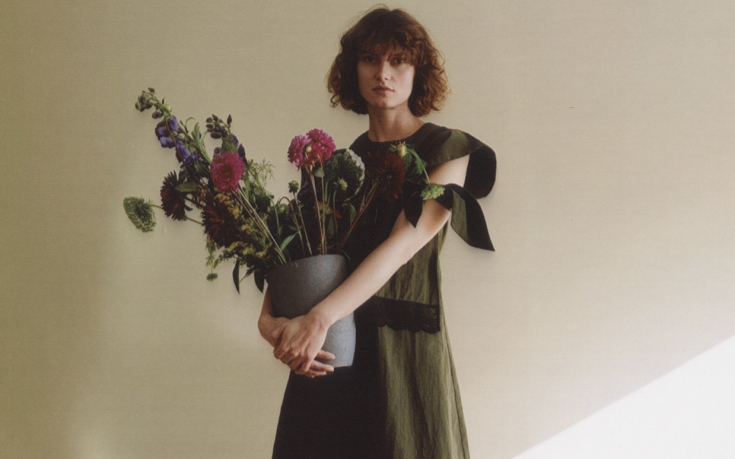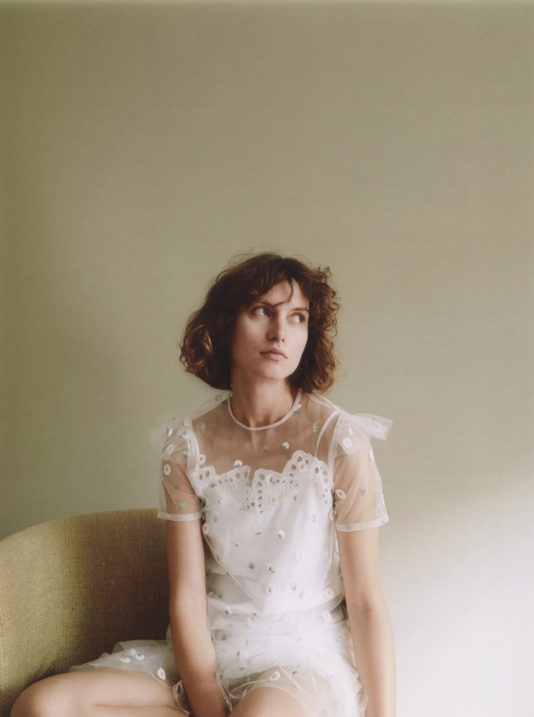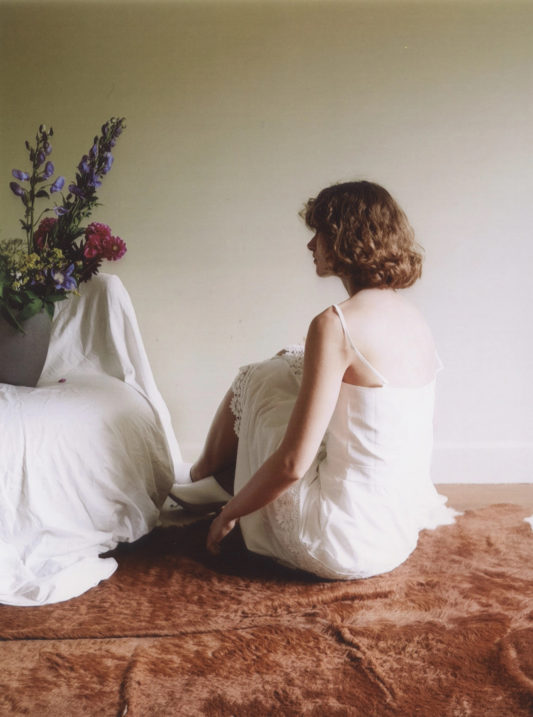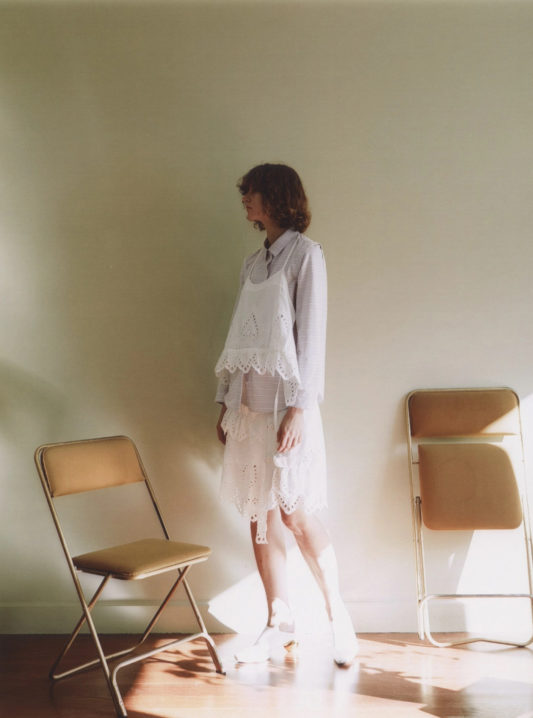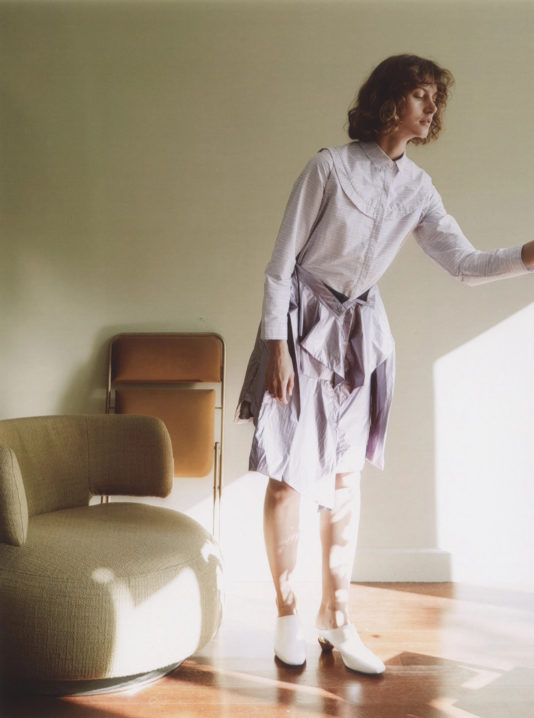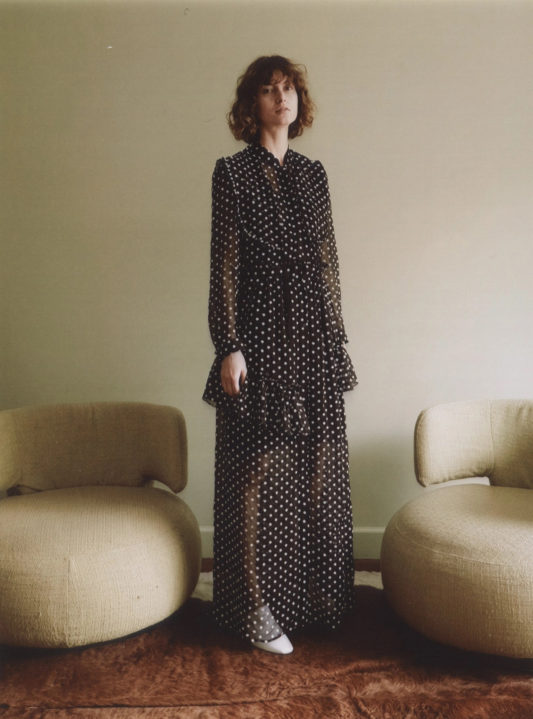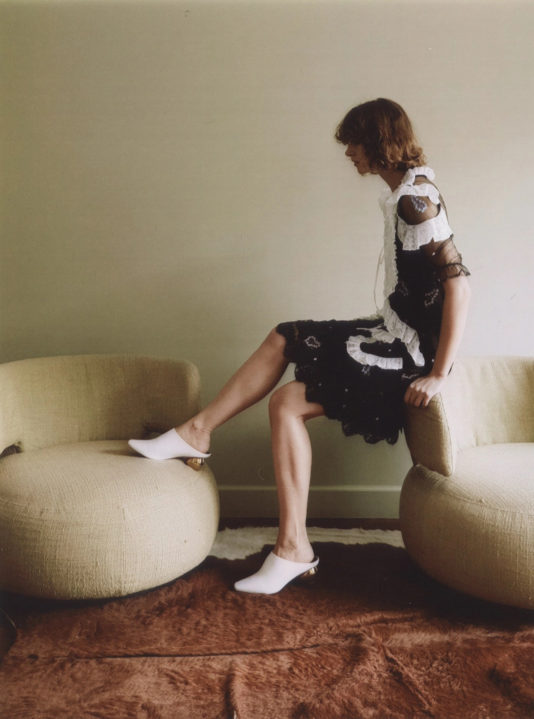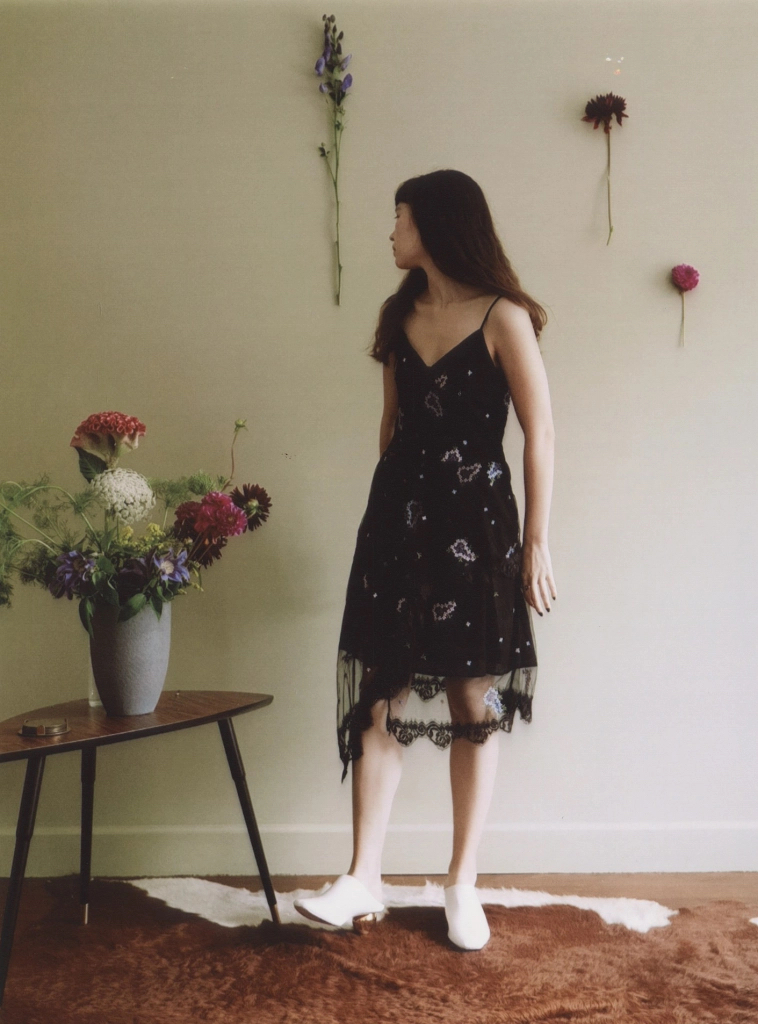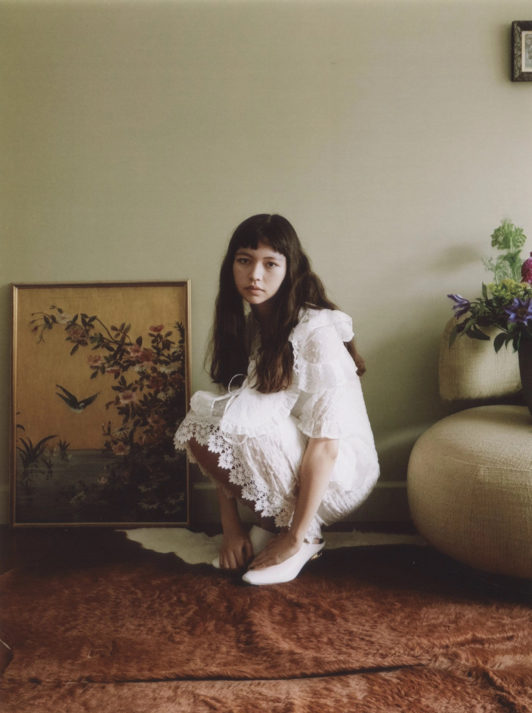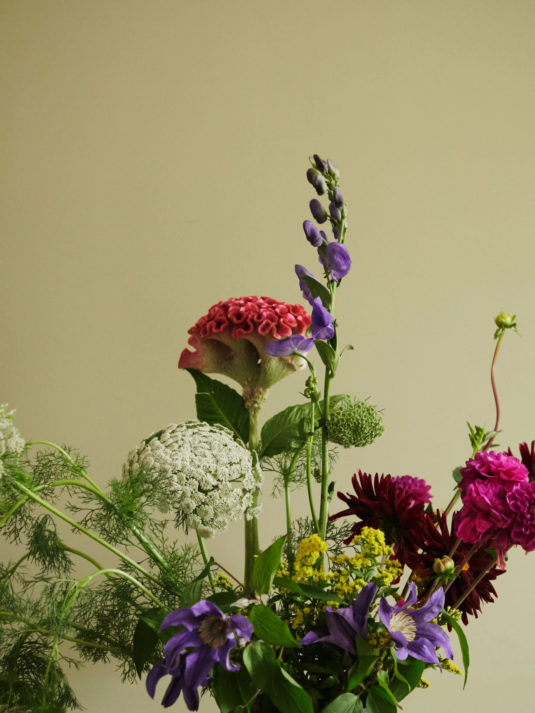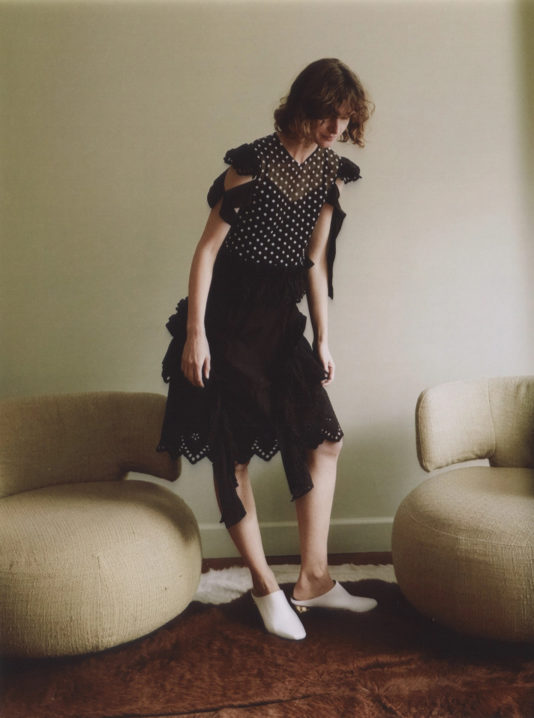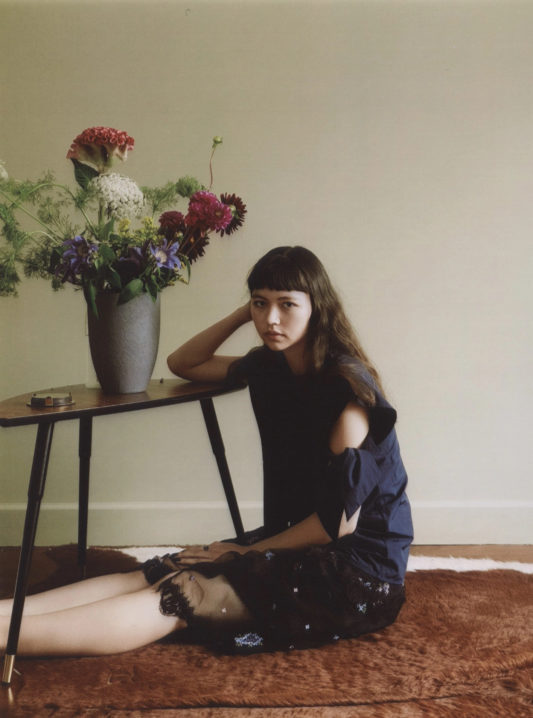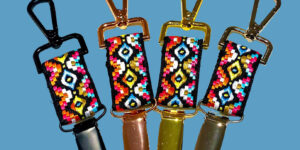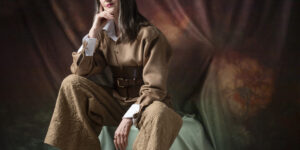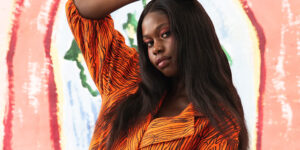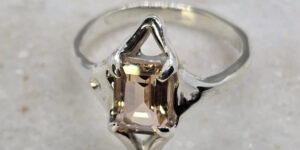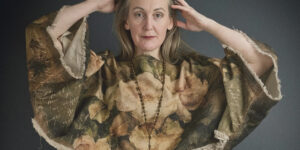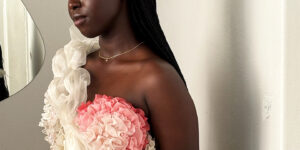Designer Jonathan Liang launched his eponymous label in 2014 with the goal of creating clothes for women that were “adaptable, provocative yet combatively feminine”, he wished to juxtapose his “world of dreams” with clothes that women could actually wear in their daily lives.
Although he launched his Paris-based label long before the current disruption to the fashion industry that is 2020, Liang didn’t have it easy. For decades there has been too much fashion circulating the globe. With new brands popping up on social media almost daily, being able to stand out, with a distinct creative voice, and actually making enough money to stay in business is not easy.
Originally from Malaysia, Liang has worked for a number of major fashion brands, including Givenchy and Surface to Air, and presumably this background enabled him to have a better understanding of the vagaries of setting up an independent fashion label.
Still, to have survived for over six years is not bad in an industry as rife with fashion failures as it is with successes.
While you can describe the brand as international, it is its connections to Australia and Asia which has assisted Liang in growing a following outside of the traditional European and American markets. Which is doubly helpful now that the rest of the world is slowly eating itself alive due to the economic and social impact of the Coronavirus, Covid19.
On top of this most unexpected of disasters, the entire fashion world has been slowly awakening to the issues of sustainability, ethical production, waste and customers’ desires to buy less and practice conscious consumerism more broadly.
Sustainability and Covid19
So how does a relatively young, contemporary womenswear label navigate these additional issues while hard up against global competitors? Liang says the impact of Covid19 has changed the way he designs, and even touched some of the concepts of the brand’s aesthetic while keeping its underlying values intact.
“In terms of design, we’ve moved to prioritise comfort above all else. Ever since the pandemic, we believe people are looking for something more comforting not only physically but mentally as well,” explains Liang.
“It hasn’t changed the way we create, it was a lot of asking ourselves, does this feel good on our skin but in [the] context of the new world we [are moving into]? The business of fashion has definitely changed as a whole, and we’re constantly adapting whilst maintaining our core design principles.”
As for the growing movement towards more sustainable and ethical clothing production, Liang says he has always taken this into consideration when designing and producing the brand.
“We are always thinking about sustainability, not just [for] the environment but sustainability in the business as a whole alongside governance too,” says Liang.
“We do what we can to ensure as small an [environmental] impact as possible, like controlling production quantity, types of fabric, and designs that require very low, to almost no wastage.”
Liang also says that the company has always practiced ethical employment but ensuring that its makers and staff had a “strong standard of living from day one”.
A Wild Garden
Liang’s latest collections have all been influenced by nature, with the concept of a “romantically carefree landscape filled with dramatic creatures” visible throughout.
Flowers feature heavily, not as garish patterns and prints, but more as an aesthetic backdrop to the clothes which are soft, voluminous and romantic. Lace details combined with girlish/boyish cuts create a modern Edwardian vibe.
While pretty and rather #cottagecore in concept, Liang’s current collection includes pieces perfect for the workplace; should we ever return. Clever use of more masculine fabrics cut into shirt-dress shapes with asymmetric detailing neatly blends the boy-girl aesthetic.
Liang’s original inspiration for Fall Winter 2020 – “floral installations on the streets of New York and JeanLuc Godard’s 1966 Masculin Féminin” – can clearly be seen in the various pieces from the collection with silk joggers worn under slips and topped with manish blazers.
The brand’s fabrics are a glorious explosion of all things delicate and beautiful – organza, tulle, lace, silk, silk-jersey, and Broderie Anglaise. Peachy pinks, white, soft lilacs and greys are offset with black and white in the current season’s colour palette for Spring Summer 2020. Quality detailing and manufacturing ensure the clothes are beautifully made with a sense of timeless handcraft about them.
The SS20 collection was inspired by the work of artist Jim Hodges who is known for his mix of hard and soft in conceptual works. This inspiration “becomes obvious in the Slinger jacket series, tailored jackets with detachable Broderie Anglaise aprons”, says Liang. More multi-functional mixes can be seen in the Stiker dress, it comes as five separate pieces that can be worn alone, or together for a range of looks and occasions.
Liang also highlights the delicate printed sheer garments that were inspired by Hodges’ 1997 ‘With the Wind’, suggesting they be worn over t-shirts to “perfectly embody the spirit of the everyday Jonathan Liang woman”.
Fashion’s Future
The pretty, wearable clothes of the Jonathan Liang label manifest a nostalgic wish for the time before Covid19, when having picnics – or brunch at a hip cafe – was an everyday occasion.
Where will we be wearing these delicate, feminine pieces in the future? Will we be willing to spend our dwindling cash on them? I’m guessing that yes, women with a sense of romance, softness, and wishful thinking will gladly take Liang’s offerings to heart, if only for the nostalgic comfort they bring.
As for the brand, Liang agrees that the fashion industry has undergone somewhat of an upheaval, but is unsure yet where the future will land.
“… It is very much dependent on each brand’s customer mindset and where they’re at too … thus we’re prioritising slower fashion that stands the test of time.”
You can shop Jonathan Liang online at society-a.com/brand/jonathan-liang/, or go to www.jonathan-liang.com/stockists.
This article was first published on www.nikibruce.com

